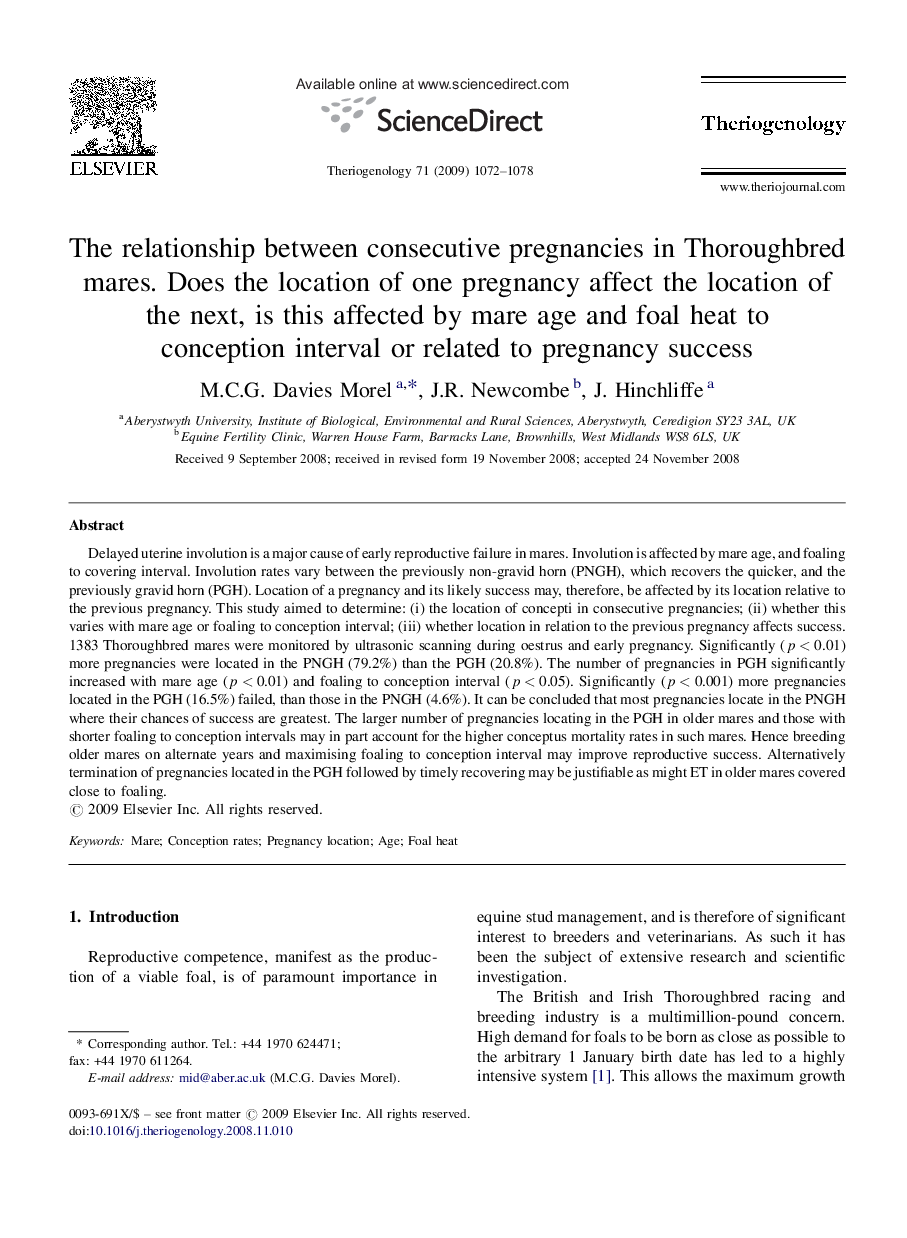| Article ID | Journal | Published Year | Pages | File Type |
|---|---|---|---|---|
| 2095875 | Theriogenology | 2009 | 7 Pages |
Delayed uterine involution is a major cause of early reproductive failure in mares. Involution is affected by mare age, and foaling to covering interval. Involution rates vary between the previously non-gravid horn (PNGH), which recovers the quicker, and the previously gravid horn (PGH). Location of a pregnancy and its likely success may, therefore, be affected by its location relative to the previous pregnancy. This study aimed to determine: (i) the location of concepti in consecutive pregnancies; (ii) whether this varies with mare age or foaling to conception interval; (iii) whether location in relation to the previous pregnancy affects success. 1383 Thoroughbred mares were monitored by ultrasonic scanning during oestrus and early pregnancy. Significantly (p < 0.01) more pregnancies were located in the PNGH (79.2%) than the PGH (20.8%). The number of pregnancies in PGH significantly increased with mare age (p < 0.01) and foaling to conception interval (p < 0.05). Significantly (p < 0.001) more pregnancies located in the PGH (16.5%) failed, than those in the PNGH (4.6%). It can be concluded that most pregnancies locate in the PNGH where their chances of success are greatest. The larger number of pregnancies locating in the PGH in older mares and those with shorter foaling to conception intervals may in part account for the higher conceptus mortality rates in such mares. Hence breeding older mares on alternate years and maximising foaling to conception interval may improve reproductive success. Alternatively termination of pregnancies located in the PGH followed by timely recovering may be justifiable as might ET in older mares covered close to foaling.
